Look and Listen for Bright Blue Indigo Buntings
Updated: Dec. 18, 2023
Learn what a male and female indigo bunting looks like, what their song sounds like and about their nests. Plus, see the range map.
On This Page
What Do Male and Female Indigo Buntings Look Like?
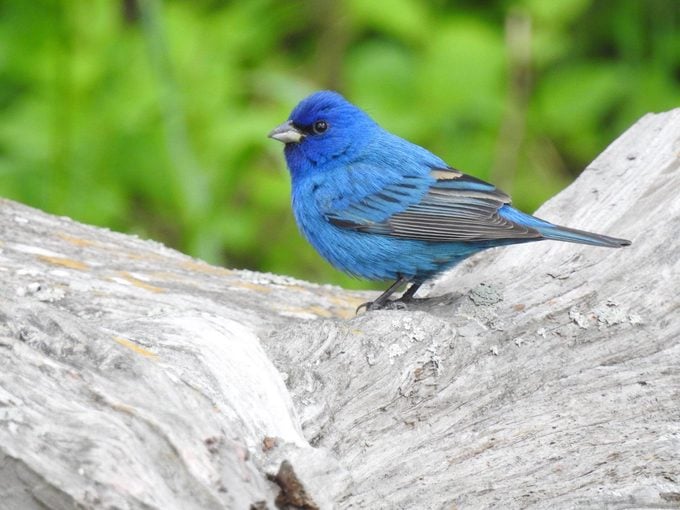
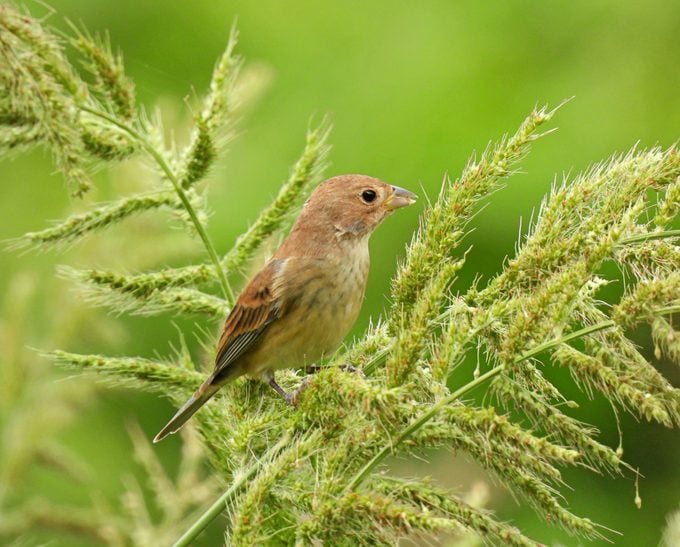
Indigo buntings are about the size of sparrows, but more finch-like in appearance. You can usually pick them out by their short tails and bills. Both males and females are 5 inches long with an 8-inch wingspan. From a distance males can look black, but as you get closer or see them from a different angle, you’ll see vibrant blue feathers.
Females and baby indigo buntings are plain brown with buff-colored streaks, a whitish throat and a hint of blue in the wings. The male is completely blue and dazzling during breeding season. In fact, no bird has a true blue pigment in its feathers. “The color occurs as an interaction of light within a complex feather structure,” says nature columnist, birder and author Gary Clark.
It takes a male bunting two years to reach its full iridescent splendor (which he loses every winter as he molts into brownish feathers). In the meantime, younger males sport splotches of brown and other off-color shades.
Blue grosbeak vs indigo bunting: how to tell them apart.
Indigo Bunting ID Challenge
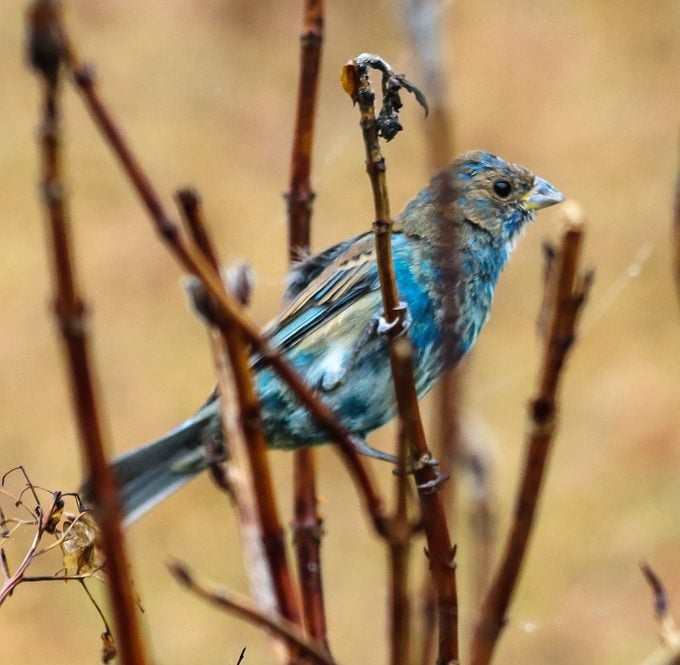
“What kind of bird (above) did I find in my backyard last January?” asks reader Wallace Lamb of Rochelle, Georgia.
Birding experts Kenn and Kimberly Kaufman said, “This is a male indigo bunting, but it’s in an unusual plumage for January. Indigo buntings molt (replace) most of the feathers on their heads and bodies twice every year, in fall and again in late winter or early spring. During the winter the male is mostly brown like the female, with only a few touches of blue, until he begins to molt into the solid blue of breeding plumage in spring. So it’s a surprise to see an indigo bunting showing so much blue in midwinter.”
Meet more beautiful bunting bird species you should know.
Indigo Bunting Nest
Females do all the work, building a cup-shaped nest hidden in shrubs or low trees, sometimes in tall weeds. The nest is lined with grass, and the female lays three or four bluish-white eggs. They generally nest in fields or the edges of woods and produce two broods per breeding season. If you’re near a cornfield, look for them flying in and out. Maybe you’ll even spot a nest!
Don’t miss these inspiring pictures of indigo buntings.
What Do Indigo Buntings Eat?
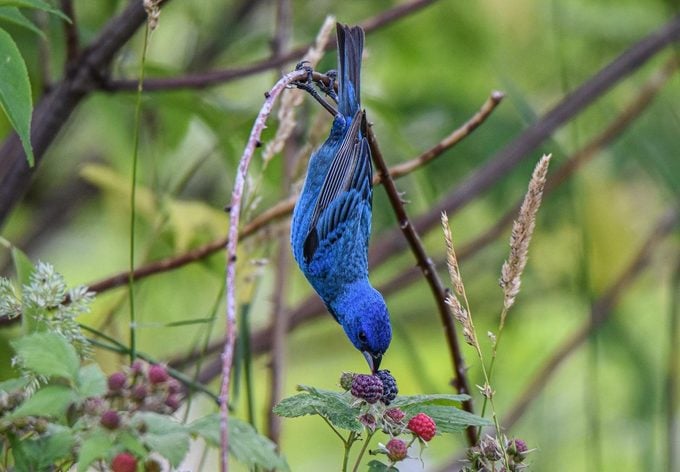
They eat insects, seeds, grains and berries. Though they aren’t common backyard visitors, you can attract indigo buntings with the same food you use for goldfinches—nyjer seed in a thistle feeder. Indigo buntings also love to eat white millet seed. They may also visit birdbaths.
Indigo Bunting Song
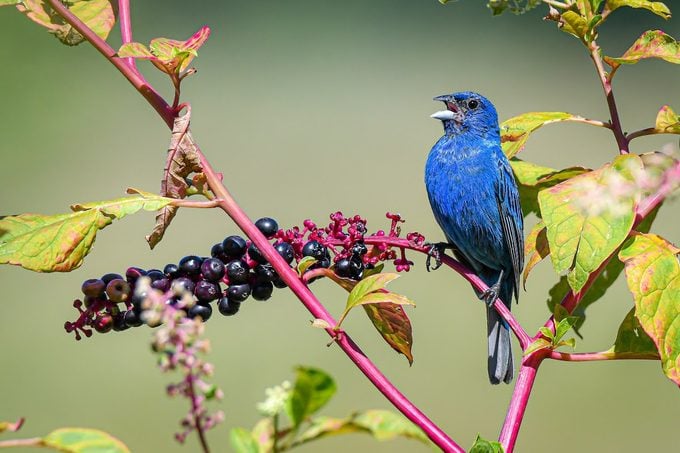
The best way to find an indigo bunting is to keep an ear out. During breeding season, males belt out a cheerful song for hours at a time. Pay attention to high treetops, telephones wires and roadside shrubs. Juvenile buntings learn to sing in the first breeding season.
“Males acquire their song by listening to other males in the neighborhood and slightly modifying it for their own song version,” Gary says. “It’s not a different song they develop, just a variation, as in human melodies where a singer slightly alters the rhythm and harmony of a tune.” This species sings with rapid double notes, “sweet-sweet, zee-zee, seer-seer, sip-sip.”
Listen to the indigo bunting’s song.
Bird songs provided by the Cornell Lab of Ornithology.
Learn how to identify snow buntings.
Indigo Bunting Range and Habitat
These birds prefer overgrown fields, orchards, roadsides, thickets and open spaces near woods. Indigo buntings are common across the eastern half of the U.S. Look for them during spring migration and in summer. You can also find them in parts of the southwest. They head to the southernmost tip of Florida, Mexico, Central America and the Caribbean to winter.
Come spring, they migrate up to 1,200 miles from wintering spots to breeding grounds through areas including Texas and southern Louisiana. Like many other songbirds, indigo buntings migrate at night, using the stars to guide them in their travels.
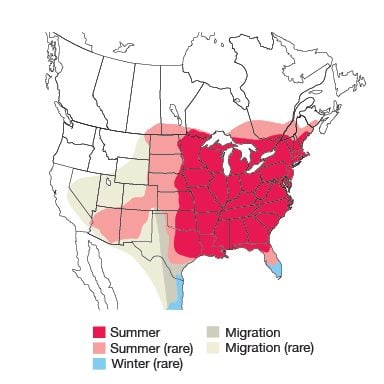
Range maps provided by Kaufman Field Guides, the official field guide of Birds & Blooms.
Next, learn how to identify lazuli buntings.
